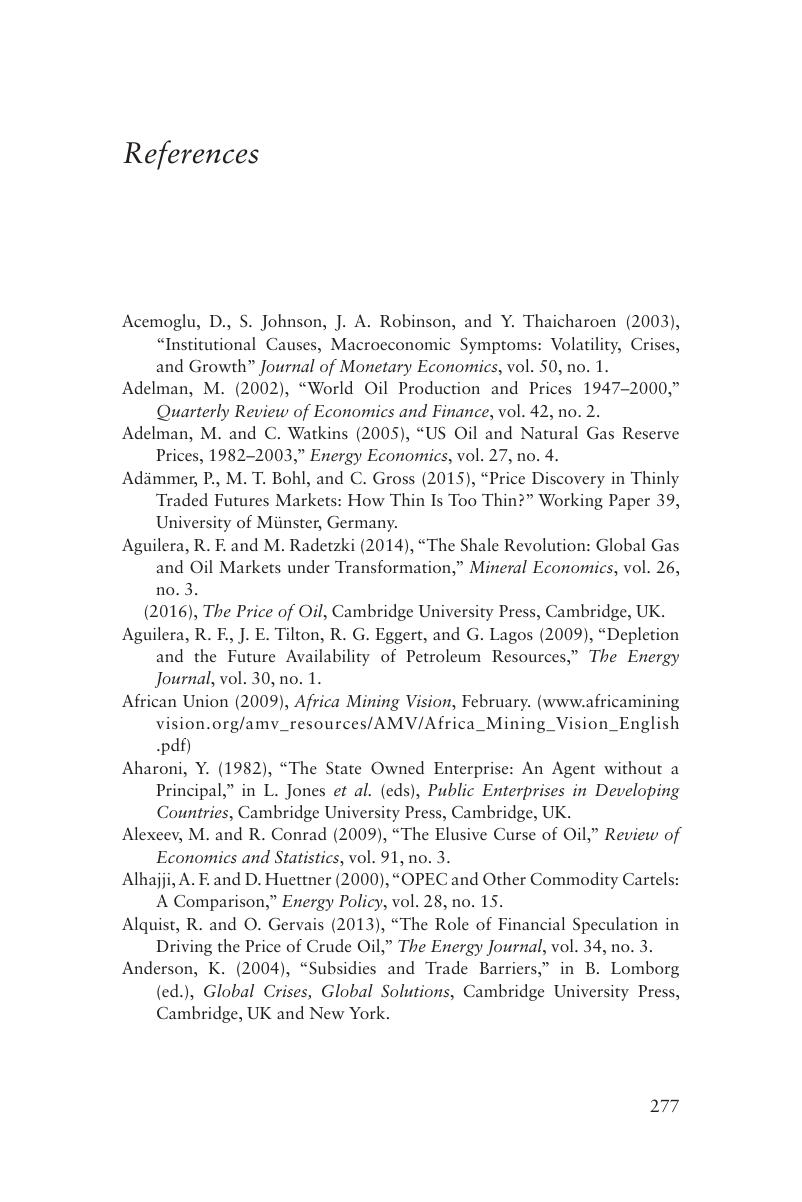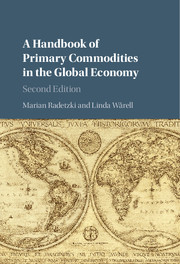Book contents
- A Handbook of Primary Commodities in the Global Economy
- A Handbook of Primary Commodities in the Global Economy
- Copyright page
- Contents
- Figures
- Tables
- Acknowledgments
- Introduction
- 1 The Historical Framework
- 2 The Geography of Commodity Production and Trade
- 3 Comparative Advantage and Trade Policy Distortions
- 4 Fossil Fuels
- 5 Price Formation and Price Trends in Commodities
- 6 Commodity Booms
- 7 The Commodity Exchanges, Commodity Investments, and Speculation
- 8 Threats of Resource Depletion and Sustainability of the Extractive Industries
- 9 Fears Regarding and Measures to Assure Supply Security
- 10 Producer Cartels in International Commodity Markets
- 11 Public Ownership of Commodity Production
- 12 The Monoeconomies: Issues Raised by Heavy Dependence on Commodity Production and Exports
- References
- Index
- References
References
Published online by Cambridge University Press: 02 February 2017
- A Handbook of Primary Commodities in the Global Economy
- A Handbook of Primary Commodities in the Global Economy
- Copyright page
- Contents
- Figures
- Tables
- Acknowledgments
- Introduction
- 1 The Historical Framework
- 2 The Geography of Commodity Production and Trade
- 3 Comparative Advantage and Trade Policy Distortions
- 4 Fossil Fuels
- 5 Price Formation and Price Trends in Commodities
- 6 Commodity Booms
- 7 The Commodity Exchanges, Commodity Investments, and Speculation
- 8 Threats of Resource Depletion and Sustainability of the Extractive Industries
- 9 Fears Regarding and Measures to Assure Supply Security
- 10 Producer Cartels in International Commodity Markets
- 11 Public Ownership of Commodity Production
- 12 The Monoeconomies: Issues Raised by Heavy Dependence on Commodity Production and Exports
- References
- Index
- References
Summary

- Type
- Chapter
- Information
- A Handbook of Primary Commodities in the Global Economy , pp. 277 - 296Publisher: Cambridge University PressPrint publication year: 2016



